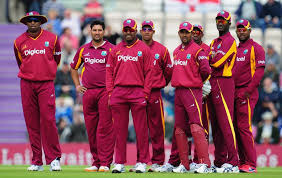Cricket is a sport deeply intertwined with weather conditions, especially when considering the context of an Online Cricket Betting Website in India. The interplay between atmospheric elements and the game itself can significantly influence match outcomes, thus presenting both opportunities and challenges for punters actively engaged in cricket betting on an Online Cricket Betting Website in India. From the scorching heat of the Indian subcontinent, where matches unfold under the intense sun and soaring temperatures, to the overcast skies of England, where swing and seam movement come to the forefront, weather conditions wield the power to alter the very dynamics of the game.
The Weather Factors that Matter
Pitch and Ball Movement
Weather conditions, particularly moisture and humidity levels, play a pivotal role in determining the state of the pitch. A damp pitch can offer assistance to fast bowlers, making the ball swing and seam more. Conversely, dry conditions tend to favor spinners. Punters should assess the pitch’s moisture content and how it is likely to evolve throughout the match. Teams with stronger fast or spin bowling attacks can be favored accordingly.
Swinging Conditions
Overcast conditions are conducive to swing bowling, as the cloud cover reduces the visibility of the ball for batsmen, making it difficult to read the line and length accurately. Punters should monitor weather forecasts for the match day and anticipate increased swing movement if cloudy conditions are expected.
Batting Conditions
On the flip side, bright and sunny conditions can create excellent batting conditions. Dry pitches and warm weather make it harder for bowlers to extract movement from the ball, and the ball tends to come onto the bat more easily. Punters might consider backing teams with strong batting lineups when clear skies are in the forecast.
Adapting Betting Strategies
Pre-match Analysis
Before placing bets, punters should thoroughly study the weather forecasts for the match location. Online resources provide comprehensive data on temperature, humidity, cloud cover, and chances of rain. Combining this information with pitch reports can give punters a clearer picture of how weather conditions might influence the match.
Toss Impact
The coin toss becomes even more crucial in variable weather conditions. Teams winning the toss can choose to bat or bowl based on the weather forecast. Punters should anticipate how teams are likely to make their decision, as it can affect the course of the match significantly. A team batting first might struggle if cloud cover is predicted later in the day, aiding the bowlers.
In-play Betting
Weather conditions can change rapidly during a cricket match, especially in longer formats like Test matches. Punters who monitor live weather updates and adapt their bets accordingly can gain an edge. If rain is expected to interrupt play, odds might shift favorably for certain outcomes. However, this strategy requires quick decision-making and access to real-time information.
Player Specialization
Different weather conditions favor different types of players. Punters should consider a player’s historical performance in specific weather conditions. For example, a fast bowler who excels in swing-friendly conditions might be a promising bet if overcast skies are predicted. Similarly, a spin bowler could be more effective in dry conditions.
Hedging Bets
In cricket, where conditions can vary significantly from one day to another, punters might consider hedging their bets. Placing bets on multiple outcomes, adjusting for potential weather fluctuations, can mitigate risks. However, this strategy requires careful calculation to ensure that potential losses are minimized.
Long-term Strategies
Punters who consistently bet on cricket can develop long-term strategies that account for different weather scenarios. This could involve closely following teams that historically perform well under specific conditions or avoiding bets on matches where the weather is expected to be a significant factor.
Conclusion
Weather conditions hold the power to turn the tables in cricket matches, affecting everything from pitch behavior to player performance. Punters who grasp the nuances of how weather interacts with the game can gain a distinct advantage in cricket betting. By meticulously analyzing forecasts, considering the toss impact, and adjusting bets in real-time, punters can tailor their strategies to leverage the weather to their advantage. Just as cricketers adapt their playing style based on conditions, savvy punters can adapt their betting strategies, enhancing their chances of success in the unpredictable world of cricket betting.



